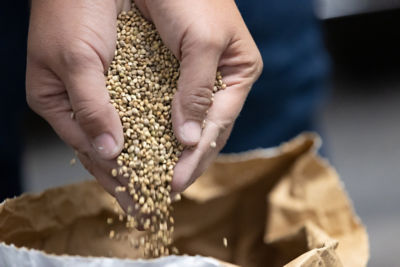Causal Agent
Meloidogyne incognita, M. javanica, M. arenaria
Distribution
Worldwide
Symptoms
Plants infected by root-knot nematodes are generally less vigorous than healthy plants. In foliage, symptoms of nutrient deficiency and diurnal wilting are visible due to reduced function of the root system. Diagnosis can be confirmed by carefully digging up the roots and observing the presence of bead-like galls. Galls are irregular enlargements of root tissue induced by nematode feeding and tend to be larger when multiple infections occur. Galls caused by different species of root-knot nematode may be similar in appearance.
 Root-knot nematode galls in eggplant.
Root-knot nematode galls in eggplant.
Conditions for Development
The host range of these three nematode species is very wide and includes many agricultural crops and weeds. Disease is most severe in warm areas with long growing seasons. In general, lighter, sandy soils favor nematode infection and result in more severe damage to roots.
Control
Fumigate infested soil and rotate to non-host grass crops to help reduce nematode populations. Plant root knot nematode-resistant varieties.




